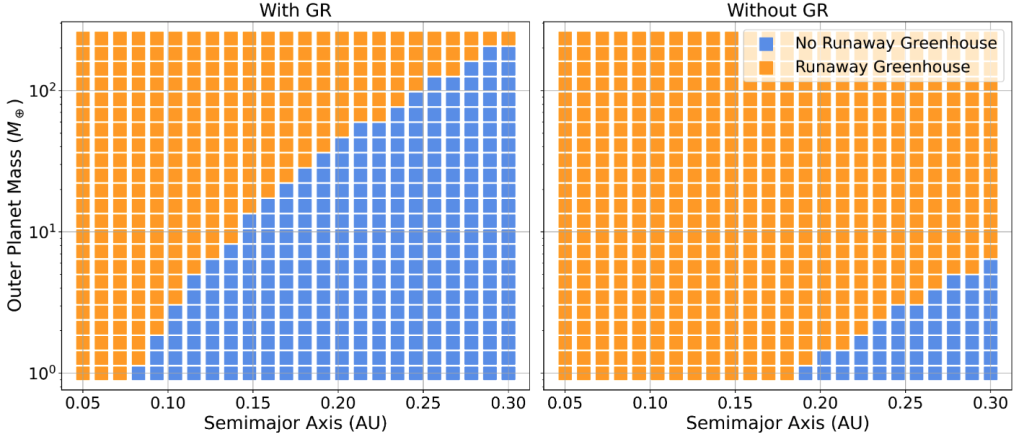A new paper led by UW-Madison undergraduate Eva Stafne and published in ApJ this week (arXiv preprint here) explores how general relativity (the same physics that explains Mercury’s orbit) could help preserve life-friendly conditions on planets orbiting white dwarfs.
White dwarfs are the dense stellar remnants of Sun-like stars. Their habitable zones lie extremely close, only 0.01–0.1 AU from the star, where even tiny orbital eccentricities can cause strong tidal heating. Previous research suggested that secular interactions from nearby planets could force small eccentricities and trigger a runaway greenhouse effect, boiling away oceans and destroying habitable conditions, if they existed.

Using analytic models and numerical simulations, Eva Stafne showed that the relativistic precession of orbits predicted by Einstein’s theory can counteract these eccentricity oscillations. In some system configurations, this relativistic effect stabilizes planetary orbits enough to prevent catastrophic heating.
The result: in compact multi-planet systems around white dwarfs, general relativity itself could act as a protective mechanism, expanding the range of planetary architectures where long-term habitability remains possible.
Press coverage of Eva’s work: